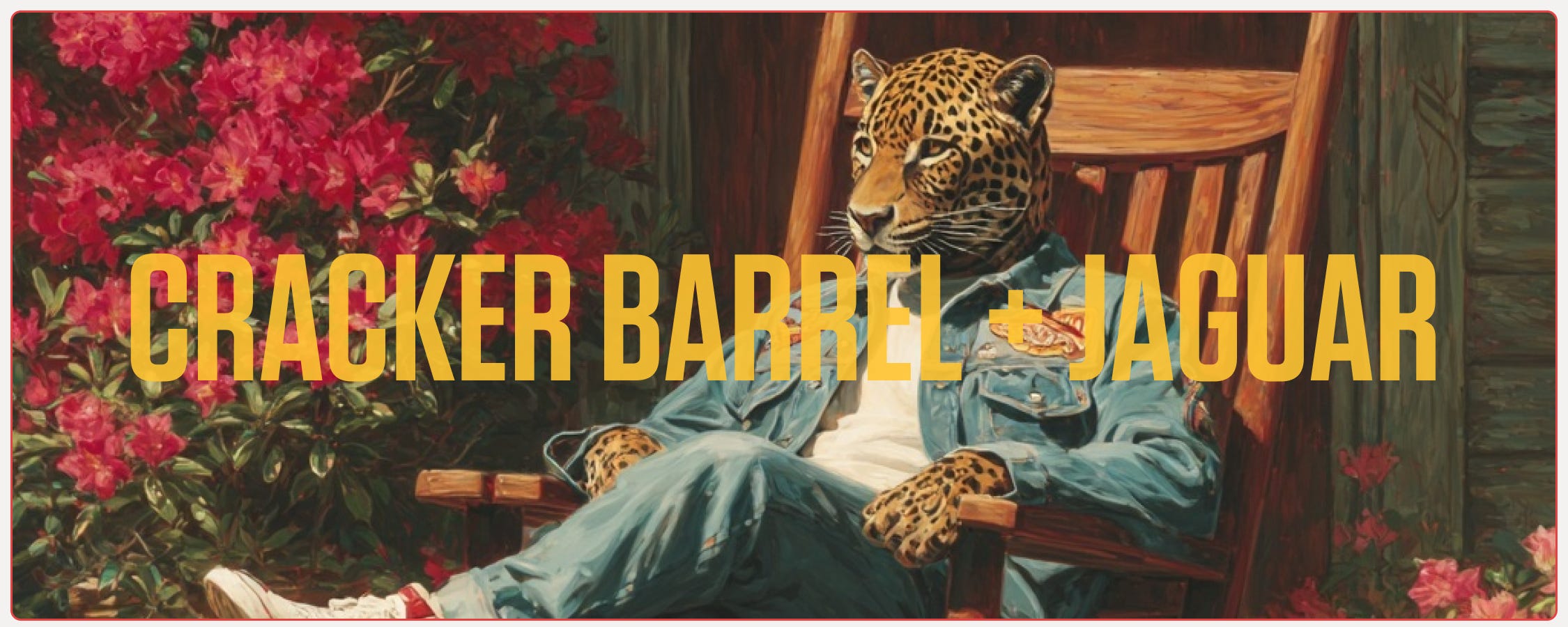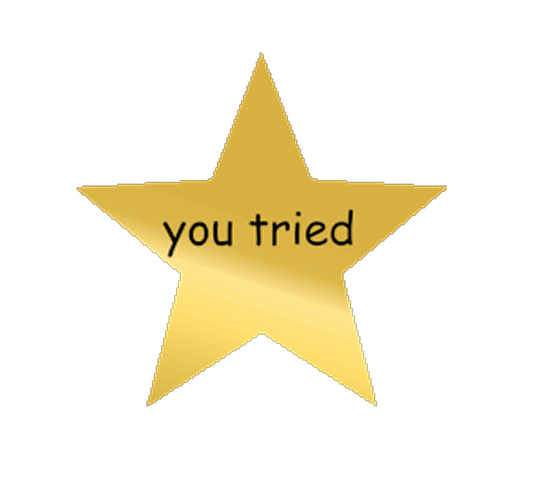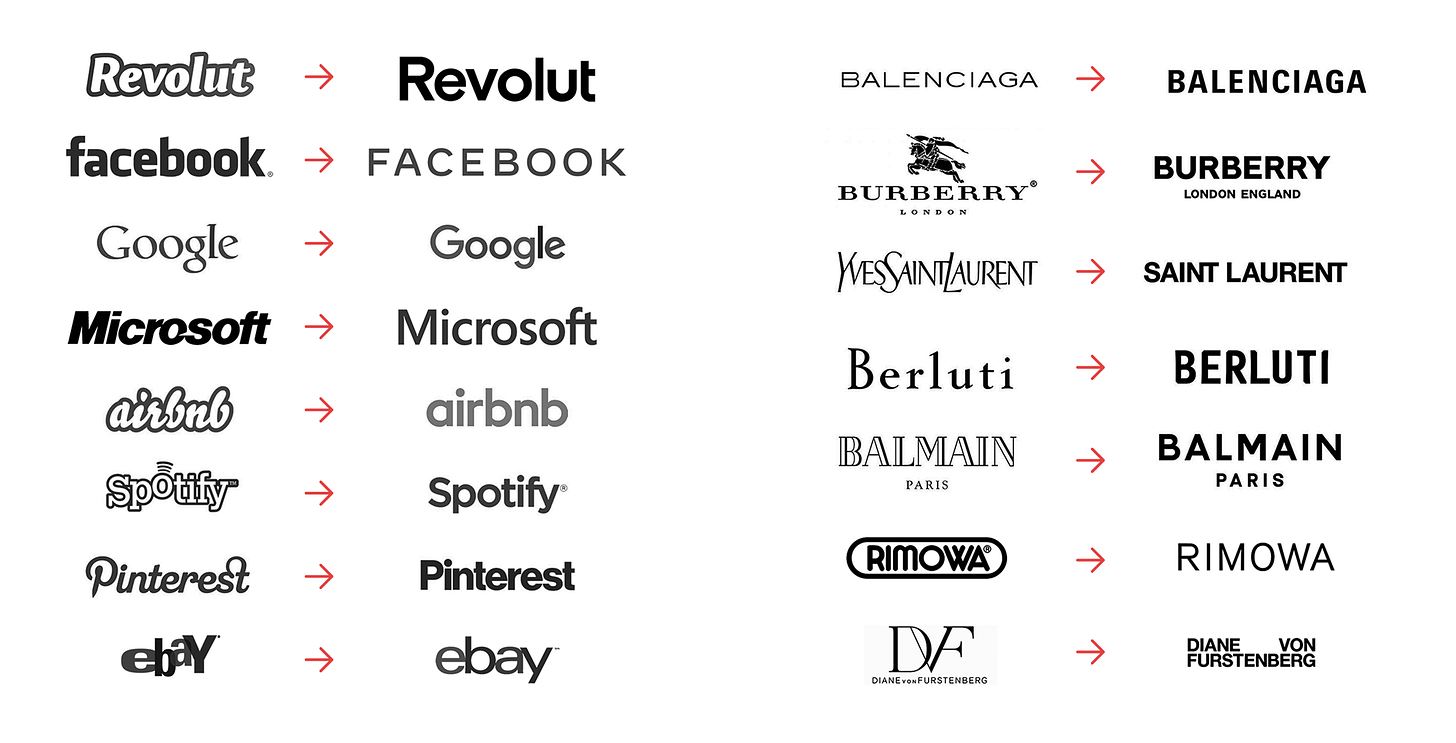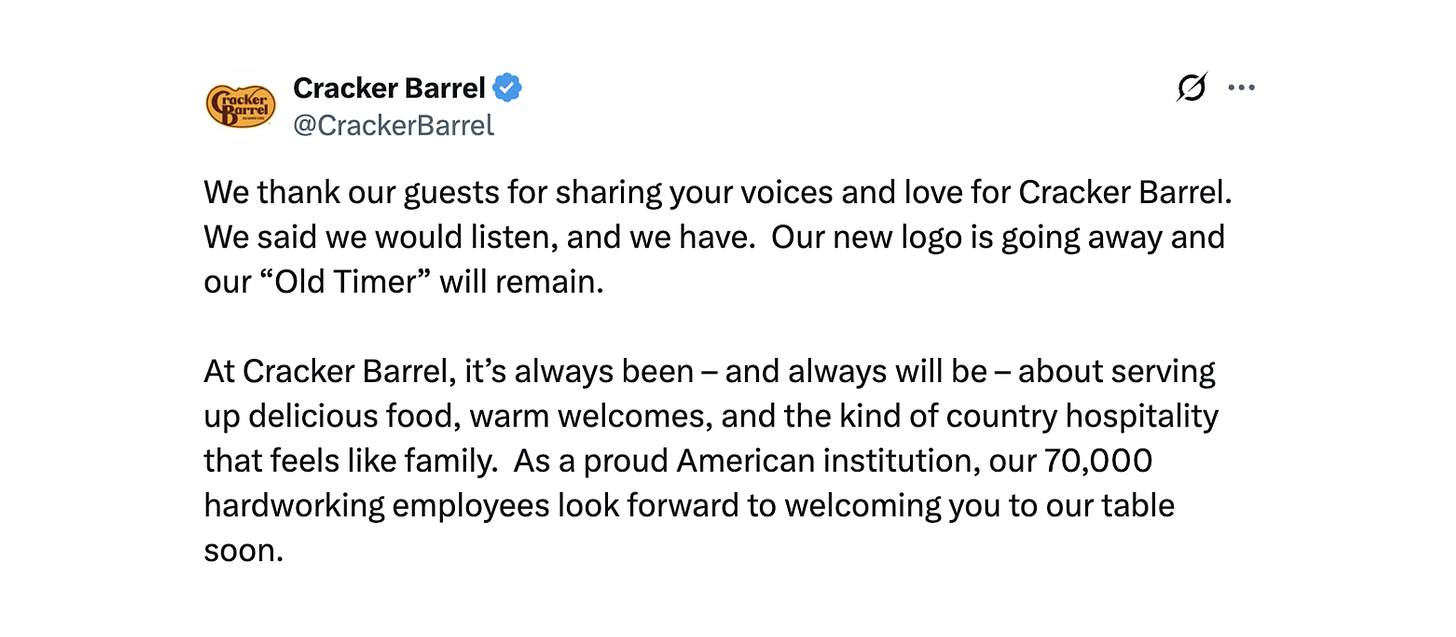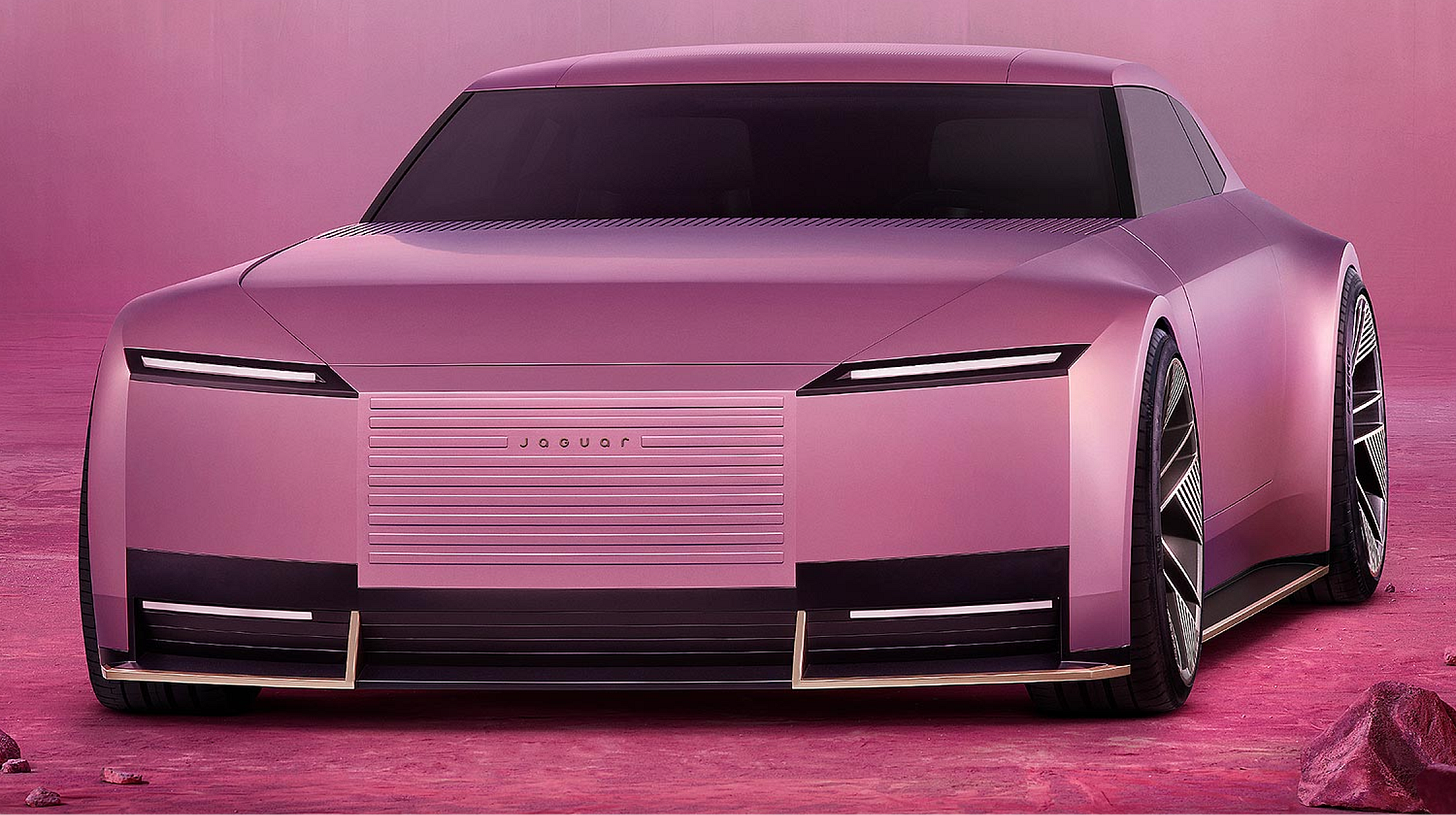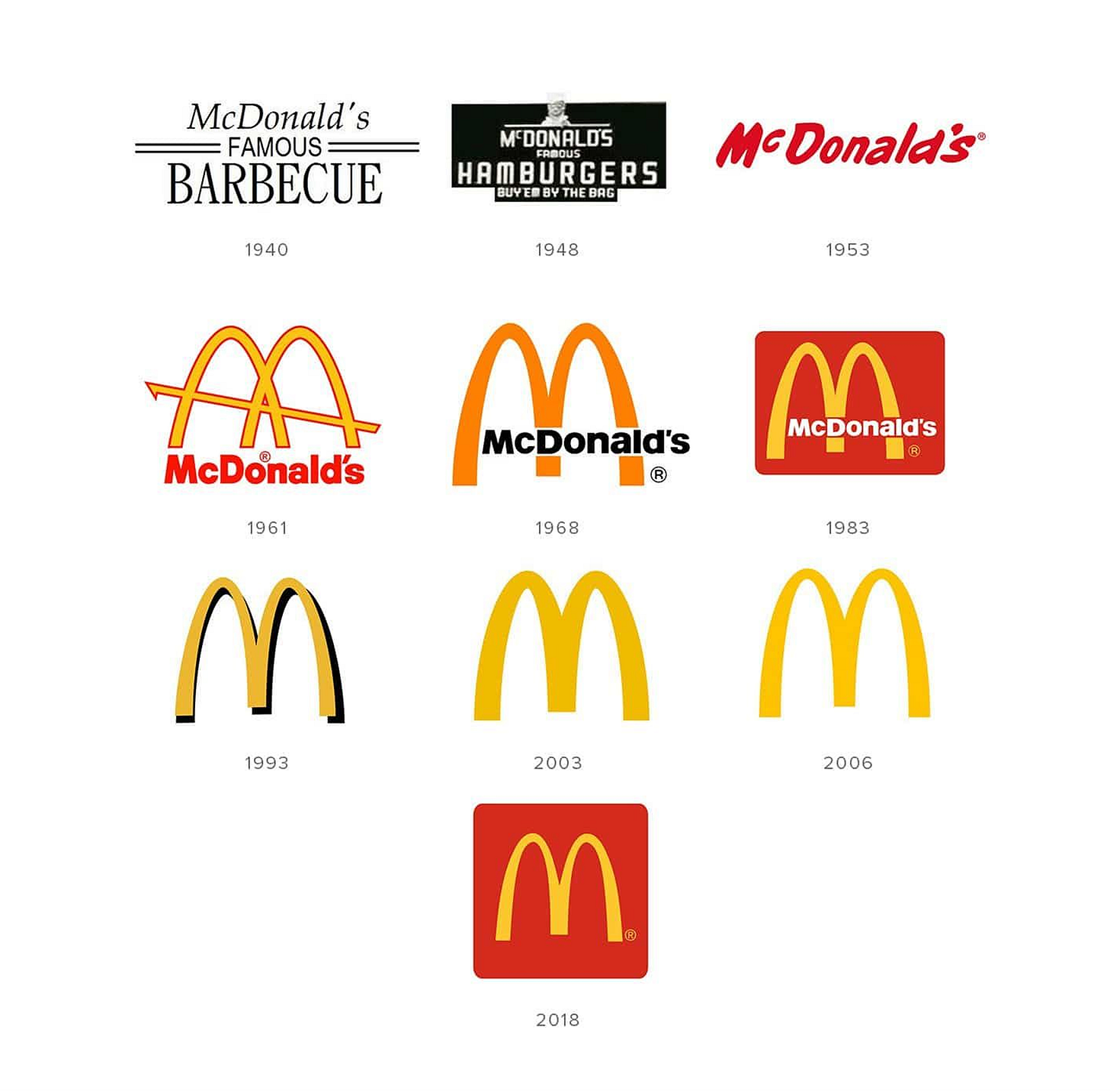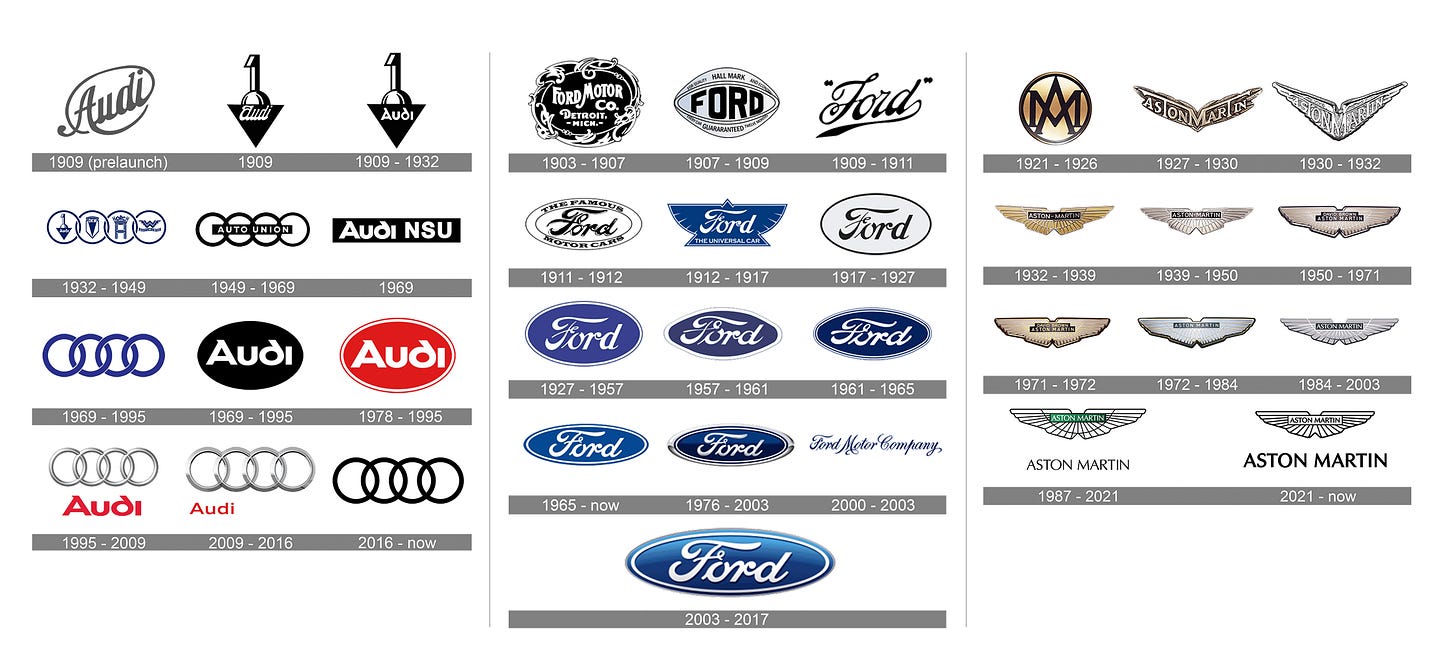Rebranding: Lessons from the missteps of Cracker Barrel and Jaguar
Takeaways from brand updates of 2 companies I don't really care about.
Nice work, Cracker Barrel - you tried.
I normally don’t pay attention to public brand identity changes or missteps, since most of these major household brands have developed enough equity to withstand questionable changes to their marks.
Cracker Barrel’s current mark has been around for roughly 50 years and is a recognizable fixture for its restaurant chain. The current logo is pretty rough, with an old white dude (Uncle Herschel) on a rocking chair, leaning his arm on a barrel. Even aside from the racial jabs the name itself might evoke, having an old white guy leaning on a barrel in the logo is definitely the wrong look in 2025.
CB’s internal instincts were right - it is definitely time for a change.
But instead of enhancing and upgrading their mark to better represent their legacy brand with 50+ years of heritage, they moved to the “say nothing but feel updated” mark, now typical of large corporations.
After the release of their new, shiny, neutered mark, the internet was up in arms as usual. Most were complaining about the presumed bastardization of the heritage of Cracker Barrel itself, and that this move was a mistake, even having the CEO of Shake Shack chiming in that they need to change back because they were “erasing their heritage”.
So they did.
I remember seeing that tweet and feeling frustrated with Cracker Barrel. Making a quick, off-the-cuff decision is one thing. Spending months on a rebrand, then rolling it back the moment negative press hits, is another. Whatever respect I had for the brand wasn’t lost on the new logo, it was lost on the reversal.
Stand by the outcome if you believed in the reason.
Jaguar experienced the same backlash, but hasn’t backed down.
Their more recent rebrand at the end of 2024 was met with the same internet uproar when they released it (along with their “Type 00” concept car showcasing this new electric-forward, modern aesthetic).
Same story, more intense consequences.
Although this logo change/change back potentially brought more publicity than either Cracker Barrel or Jaguar have received in the past 3 decades, there are some lasting takeaways that are worth exploring when thinking through a brand, a rebrand, and company leadership.
A brand is more than a logo.
As annoyed as I might be about the internet having such strong opinions about a logo change for a car I will never drive or a mediocre breakfast chain, it’s good to call out that the emotional uproar is rooted in the perceived destruction of legacy brands that have been built on nostalgia. People weren't heated because they felt like the colors sucked, the typeface was off, or the general artistic direction, but because it felt like it was stripping off its legacy.
Heritage brands (brands with history, longevity, and cultural or emotional resonance) have a unique burden when entertaining a rebrand. There are childhood memories and experiences baked into those institutions that need to be addressed when considering a rebrand. Legacy brand updates can definitely be done (and done well), but it’s a delicate task. The rebrand needs to creatively acknowledge the past while modernizing and representing the future of the brand.
For these types of brands, change in marks and identity must be a conversation, not a monologue.
McDonald's is a great example in the same category as Cracker Barrel, of a brand that has pulled this off:
In the automotive industry, there are plenty of examples of a slow, intentional progression and rollout of updating marks:
Update for the right reasons (and stand by your choice)
CB’s new logo lasted 1 week long before leadership reverted to the previous logo.
Launching a new logo, then reverting it back after 1 week allows me to make a few assumptions:
1. They felt pressure to update to increase sales and reach a lower aged demographic.
2. They trusted an agency, presumably with very little design direction.
3. Stakeholders were never invested in the reason behind the rebrand, thus reverting the second they received negative pushback from the internet.
Design is hard, especially when stakeholders are not clear with desired outcomes or expectations.
If CB’s motivation for a rebrand was to increase sales, the only way to judge if the rebrand was successful is to examine if there was an increase in sales post-update. Seven days is not enough time to judge if this change drove sales.
This means stakeholders didn’t believe strongly enough in their purpose behind the update to withstand negativity, or, the agency went rogue with their interpretation of the brief and somehow pushed the change without Cracker Barrel’s approval. My bet is on the first, not just because I’m a biased designer.
In Jaguar’s case, motivation was a positioning decision. Jaguar was hoping to expand their market into ultra-luxury, electric vehicles. Instead of simply rolling out a model or two that fit this bill, they decided to throw all their eggs into the “luxury modern electric car company” basket. As an already polarizing brand, Jaguar’s decision to switch positioning further segmented its limited customer base, leading to a 75.1% drop in sales in Europe, with just 2,665 cars sold. Oof.
I will say, in retrospect, that I have much more respect for Jaguar’s choice to stick with their mark, rather than reverting back to previous marks like Cracker Barrel. Their entire strategy (not just rebrand but manufacturing changes, etc.) is an $18B, multi-year investment. They are moving forward even with the immediate pushback, presumably because they believe in their vision. Stay strong, Jaguar! I’ll still never own one of your cars, but I’m proud of you.
All this to say, if you believe in your reasoning, own the outcomes. Let them drive your decisions, not a moving target like the internet.
Hire design leadership
Great design leadership begins with empathy.
Empathy is the ability to understand and connect with another person’s emotions, thoughts, or perspective. Strong design leadership relies on that same skill, anticipating how people will experience a product or brand and how they’ll respond when it’s put into the world.
There is a common idea (especially with larger companies) that simply hiring an expensive, well-known design agency will solve any brand or positioning problems they might have (*cough* Cracker Barrel *cough*). The idea that if enough money is spent, these companies can just hire out for campaign and asset creation, bypassing design leadership altogether.
Unfortunately, this is the equivalent to hiring a builder to construct a house without any direction. They would probably make something semi-cool, solidly constructed, accomplishing the goal of building a house… But in reality, the home would not be your home. It wouldn’t have been built with your distinct needs and tastes in mind. It would just be another, presumably well-constructed house.
Now picture the same scenario, but with an architect involved. You’ve shared how you plan to live in the house, your tastes and preferences, even the fact that you can’t stand open kitchens because the dishes tend to pile up in your household. When the builders execute on the architect-delivered plan, you’re confident the result will be more than just a solid structure. It will reflect your point of view, ethos, your taste, and your lifestyle, meeting your needs in the way you want them met.
Design leadership is the architect of your strategy.
You’ve established your positioning and organizational goals, and you need someone who can craft the plans to accomplish those objectives while considering your company and client’s point of view, taste, and lifestyle. Great design leadership will accomplish this, creating a blueprint to success.
Outsourcing design to an agency without the proper leadership will fall flat most (if not all) of the time. Not because the agency is bad at its craft, but because no amount of money will create the clarity and direction a design leader rooted in the goals of the company will bring.
I’m not here to hate on Cracker Barrel or Jaguar. Like I wrote earlier, design is hard. Especially when you do it for publicly traded companies with immediate criticism just one click away.
Heritage brands like this have a greater responsibility to their customer to communicate the process more than a startup or smaller company. Especially in cases where motivations are financially or positionally driven. These companies have the burden to respect the company’s nostalgia and history, leading customers through the change rather than simply dropping it on them, hoping for a positive reaction.
With the right plan and design leadership, each of these examples might have earned a better reaction. Empathy in the approach often matters more than the assets themselves.



